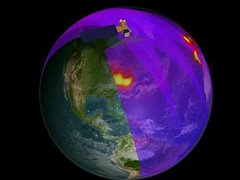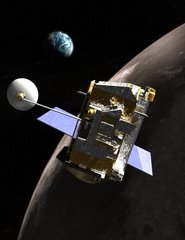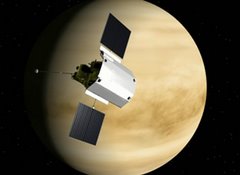

Smoke from the recent outbreak of fires in Southern California can clearly be seen via NASA satellites. On the left, a red-green-blue (RGB) image from the Moderate Resolution Imaging Spectroradiometer (MODIS) on NASA's Aqua satellite shows the smoke being blown to the west from the Los Angeles basin to the waters of the Pacific Ocean on November 16, 2008. On the right, measurements of the Aerosol Index taken by the Ozone Monitoring Instrument (OMI) onboard NASA's Aura satellite are overlayed on top of the MODIS image. As can be seen in this image, the Aerosol Index, which measures the difference in the amount of ultraviolet (UV) light the atmosphere scatters back at given place and time to the amount of UV light that the atmosphere would scatter back if it were totally clear, can effectively detect smoke that is otherwise hard to detect via MODIS imagery as that smoke is transported over bright surfaces such as the low level marine stratocumulus clouds just off the coast. As a result, UV measurements from instruments such as OMI can be used to help detemine the effect such aerosols have on clouds.
MODIS image courtesy the MODIS Rapid Response web site.
OMI AI image courtesy Colin Seftor, NASA Atmospheric Chemistry and Dynamics Branch



